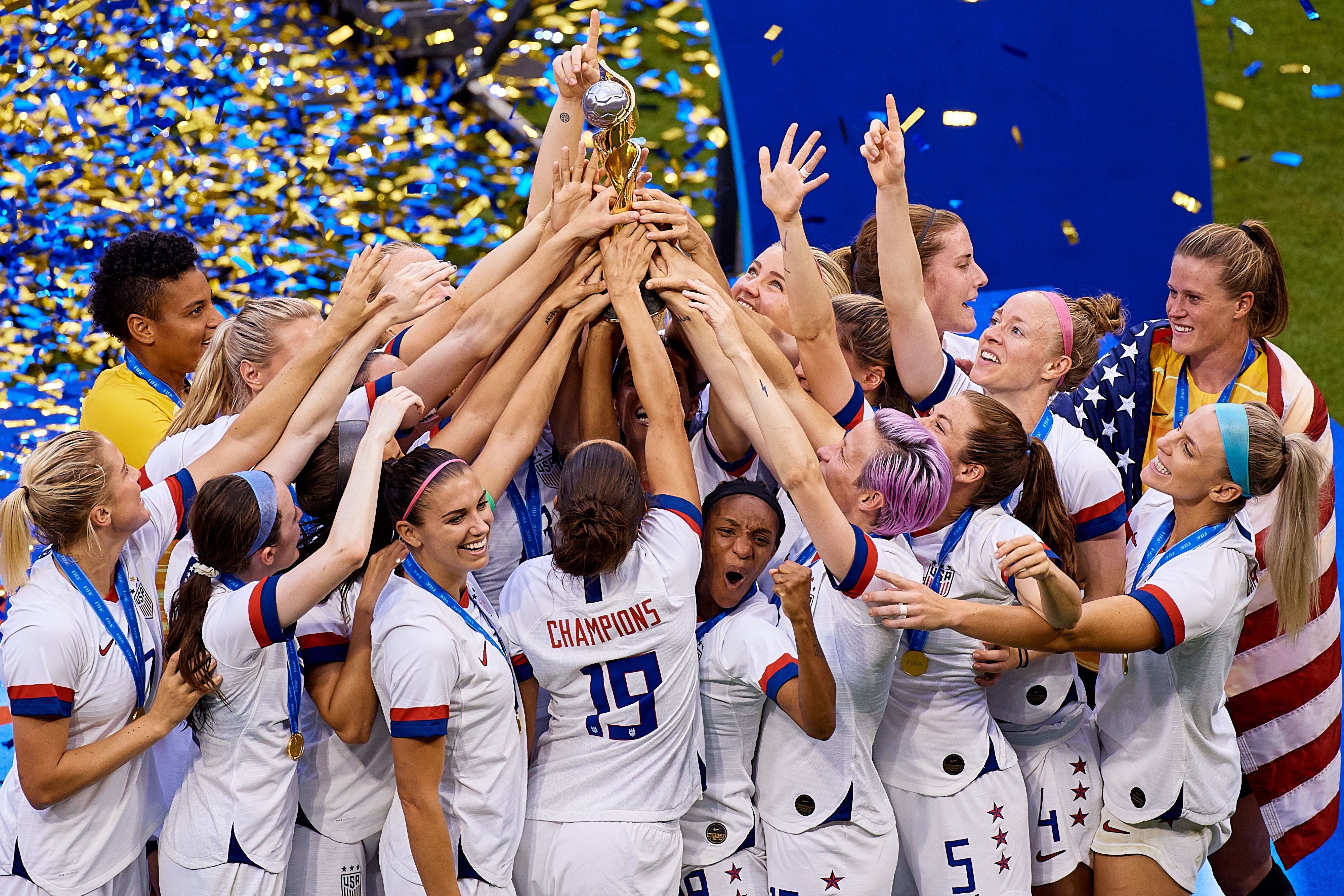
On July 7, 2019, the US Women’s National Team (USWNT) deservedly won its unprecedented 4th soccer world championship in France, becoming only the second women’s national team to successfully defend its title. For many, the latest edition of this global tournament offered a vast field of female athletes displaying enhanced prowess in technical, tactical and physical ability. The increased commercial appeal of the games and the number of stars gracing the tournament was a further indication of women’s soccer potential as a revenue-generating enterprise capable of providing a viable career path for women athletes.
Yet, the American women’s achievement is now somewhat overshadowed by the team’s ongoing lawsuit against the US Soccer Federation (USSF), the governing body overseeing both men and women’s national soccer teams. No sooner had the final whistle been blown that the chants of “equal pay” soared above the din of victory celebrations. At the heart of the dispute lies the pay inequity between the men and women national teams. The US Congress has now waded into this dispute, threatening legislation to impede USSF operations until parity in reward money has been reached.
There is no question that the American women’s national team players deserve an equal reward for winning a major global tournament. They have consistently outperformed their male counterparts on the international scene, filled stadiums on numerous occasions, and outsold jerseys and other national team apparels over their male counterparts. However, the current focus on tournament-based equal payment for national team players threatens to overlook a unique opportunity to create an environment for the development of sustainable career paths for all women soccer players.
The game of soccer is a multi-billion-dollar enterprise in the entertainment industry and as such, it follows the fundamental principle of supply and demand. The overall financial value and the subsequent compensation pot for the men’s game is larger than that of the women’s game at any level, in almost every country in the world. According to Forbes magazine, the total prize money for the World Cup in France amounted to just over $30 million. By comparison, the pot for the men’s upcoming World Cup in Qatar is expected to top $440 million. Why such a disparity? Simply put, it’s down to their respective commercial value.
If winning a World Cup was a criterion for earnings and compensation, then two of the game’s attractions, Cristiano Ronaldo and Lionel Messi, would not also be its top earners. Neither has won the World Cup and in Messi’s case not even a regional trophy for his country. What they benefit from is a highly developed environment of club and national team competitions in which they can perform and sell their brand all year long. The sad reality is that once the Women’s World Cup fever dies out and the victory tours and media appearances complete their cycle, these women athletes will go back to their daily routine of struggling under the shadow of their male counterparts.
The overall quality and entertainment value of this summer’s World Cup provides a unique entrepreneurial opportunity to raise the women’s game from its non-World Cup obscurity. The US Soccer Federation along with the regional CONMOBEL, other regional confederations, and FIFA must act (with investors, champions, leaders) to create a viable environment. There is no reason why the Women’s game should follow the same path as the development of the men’s game. Here is an opportunity to try new formats and build new infrastructures where world stars can compete against one another at club level on a regular basis. While generally, confederations are possessive of their assets, the women’s game is too young to be treated the same way. Let’s have a win-win approach and provide an environment in which the game and its athletes can be on display selling their brand all year long, every year.
One of the most iconic sports images of the last decade is Brandi Chastain celebrating US Women’s first World Cup triumph, yet the promise of that moment was never fully realized. Let’s make sure that this time the Women’s game is here to stay for all the right reasons.
Babak Yektafar is a Senior Program Officer for MENA at CIPE.
Published Date: August 02, 2019